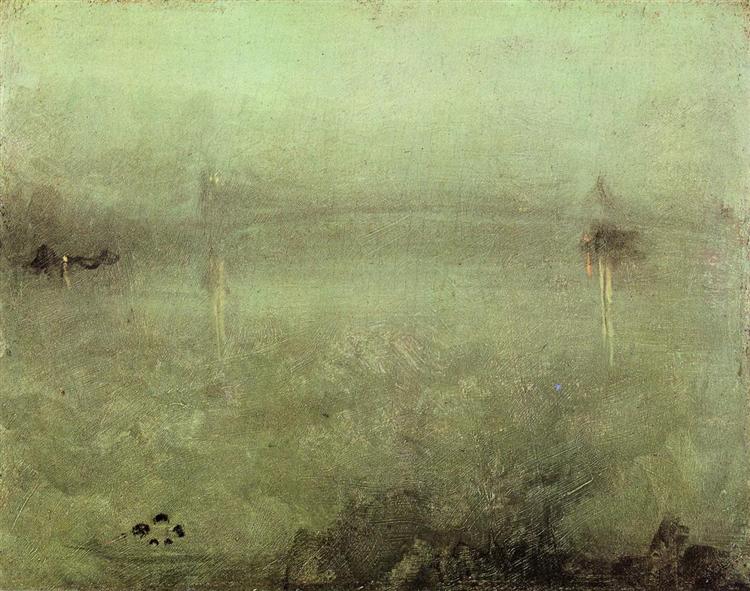Description
The "nightly: silver and opal chelsea - 1889" paint by James McNeill Whistler constitutes an evocative testimony of the artist's dominance over the atmosphere and chromatic emotionality. Within the framework of the aesthetic movement of the late nineteenth century, Whistler distances himself from the detailed and realistic representation, seeking to capture the essence and atmosphere of the place, imbued with a subtle and enveloping lyricism.
This specific work, like many others of Whistler's "nightly" famous, is not conceived to be understood in terms of narration or direct description. Rather, it is a symphony of colors and shades that seek to evoke an emotional response in the viewer. The choice of "silver and opal" as a descriptor not only refers to the predominant nuances of the painting, but also to the ethereal and almost nebulous effect of the night environment represented. Silver tones and opaline reflexes confer to the scene a dreamlike quality between the tangible and the intangible.
The composition is deliberately vague, blurred, with barely suggested forms that dissolve in an omnipresent fog. There are no defined characters, and any indication of human activity is insinuated ephemerally. This approach is not accidental; Whistler tries to capture the quiet and meditative atmosphere of one night in Chelsea, a London neighborhood often appreciated by his views on the Thames river. In fact, the aquatic environment is a recurring theme in its work, where water becomes a mirror of light and shadows, transforming into a reflexive surface that distorts and beautifies reality.
As for the technique, Whistler's brushstroke is fluid and fine, aimed at creating a sense of continuity and fluidity. The application of the paint seems almost translucent, allowing the canvas to play an active role in the representation of the effect of transparency and depth. This suggests an inspiration in the eastern technique of ink washing and Aquarela, which Whistler appreciates greatly and with which he experiences throughout his career.
"Nocturno: Silver and Chelsea opal" embodies Whistler's artistic philosophy, who claimed that art should aspire to be like music, not necessarily telling a story but evoking sensations and moods. In his search to abstract pure beauty and strip the art of the claims of morality or narrative illustration, Whistler culminates in a pictorial way that invites introspective contemplation and meditation.
This work, like many of its contemporaries, challenges the conventions and aesthetic norms of its time, standing in a liminal space where art becomes a sensory and mental experience. Little by little, Whistler is consolidated as a pioneer of modernism, advocating an autonomous and self -sufficient art, where beauty lies in the subtlety of form, color and lighting. Thus, "nocturnal: silver and opal Chelsea - 1889" It is not only an example of its technical mastery and refined aesthetic sense, but also a reflection of its unique philosophy and its revolutionary vision of art.
KUADROS ©, a famous paint on your wall.
Hand-made oil painting reproductions, with the quality of professional artists and the distinctive seal of KUADROS ©.
Art reproduction service with satisfaction guarantee. If you are not completely satisfied with the replica of your painting, we refund your money 100%.

